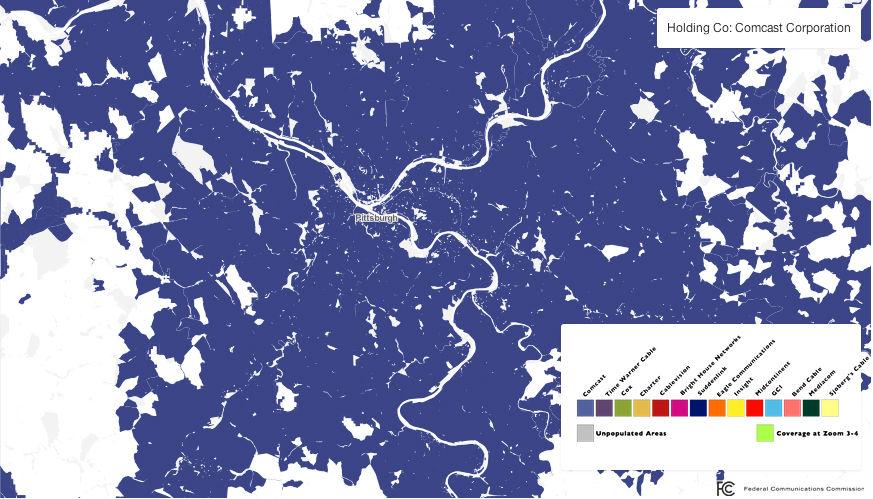Oakland residents contemplate Internet service provider switch
October 19, 2014
Amy Howell has a lot of half-finished movies in her Netflix queue.
“We have a TV that can stream from Netflix,” Howell said. “But we were never able to watch a movie start to finish because the Internet would always cut out in the middle and disconnect our movie.”
Howell, a junior bioengineering major and North Oakland resident, switched her Internet service provider from Comcast XFINITY to Verizon in August after experiencing technical issues, including Internet service that often disconnected or was unreliable.
Robert Grove, vice president of public relations for Comcast in the western Pennsylvania region, said he regrets that some students have had issues with their Comcast service but insisted Comcast is “working hard to make significant investments to improve customer experience.”
He declined to comment further on individual complaints from Oakland customers.
Verizon launched its fiber optic network, Verizon FiOS, in August 2009. Construction of the network will finish in the Pittsburgh area next September, but FiOS is available now in some small areas of Oakland to prepare for the city-wide availability next year. Some Pitt students and Oakland residents decided to switch to Verizon because of the presence of another cable and Internet option aside from Comcast XFINITY, the popular Internet and cable provider in the area. A 2010 map of cable and Internet service providers from the Federal Communications Commission showed that Comcast dominates the Pittsburgh area nearly exclusively.
“Our presence in Oakland is strong among Pitt students,” Grove said. “Sales this year to the Pitt student population were very good before the start of the school year, which is something we continue to see year after year.”
Lee Gierczynski, Verizon regional spokesperson for Pennsylvania, New Jersey and Delaware, said downloading and uploading are the prime reasons why Verizon will be competitive in the Oakland market.
“Many young professionals and college-aged students are looking for services that rely on upload speed,” Gierczynski said. “Rather than just using the internet for emailing, the younger generation wants to share pictures, videos, all sorts of graphic media. We’re able to offer equal download and upload speeds.”
FiOS will include download and upload speeds of up to 500 megabits per second, Gierczynski said, compared to Comcast’s 150 listed on their website.
Alli Soenksen, a senior majoring in finance, said she’s currently experiencing problems with Comcast Internet service in her apartment on Semple Street. She and her roommates said they plan to change from Comcast to Verizon in the future as well.
“We started the school year with the Comcast box from the summer and the Wi-Fi worked perfectly,” Soenksen said. “Then, a Comcast sales representative came to our apartment offering us a discounted rate, for faster and updated Wi-Fi. We agreed and he installed the new box. Ever since, we haven’t had reliable Internet throughout the entire house.”
Grove declined to comment on this matter as well.
Soenksen said she and her roommates purchased a new wireless router, suspecting that may have been the problem, but the Internet still malfunctioned.
Verizon High Speed DSL, the precursor to FiOS, came to western Pennsylvania roughly seven years ago, Gierczynski said.
“When Verizon entered the market we brought competition and choice to the market,” Gierczynski said. “It has forced competitors to innovate and keep up with what Verizon is offering in the market, [and] once the construction of the network is complete, marketing and communication with the customers will increase.”
[Editor’s note: Alli Soensken works on the business staff at The Pitt News.]



